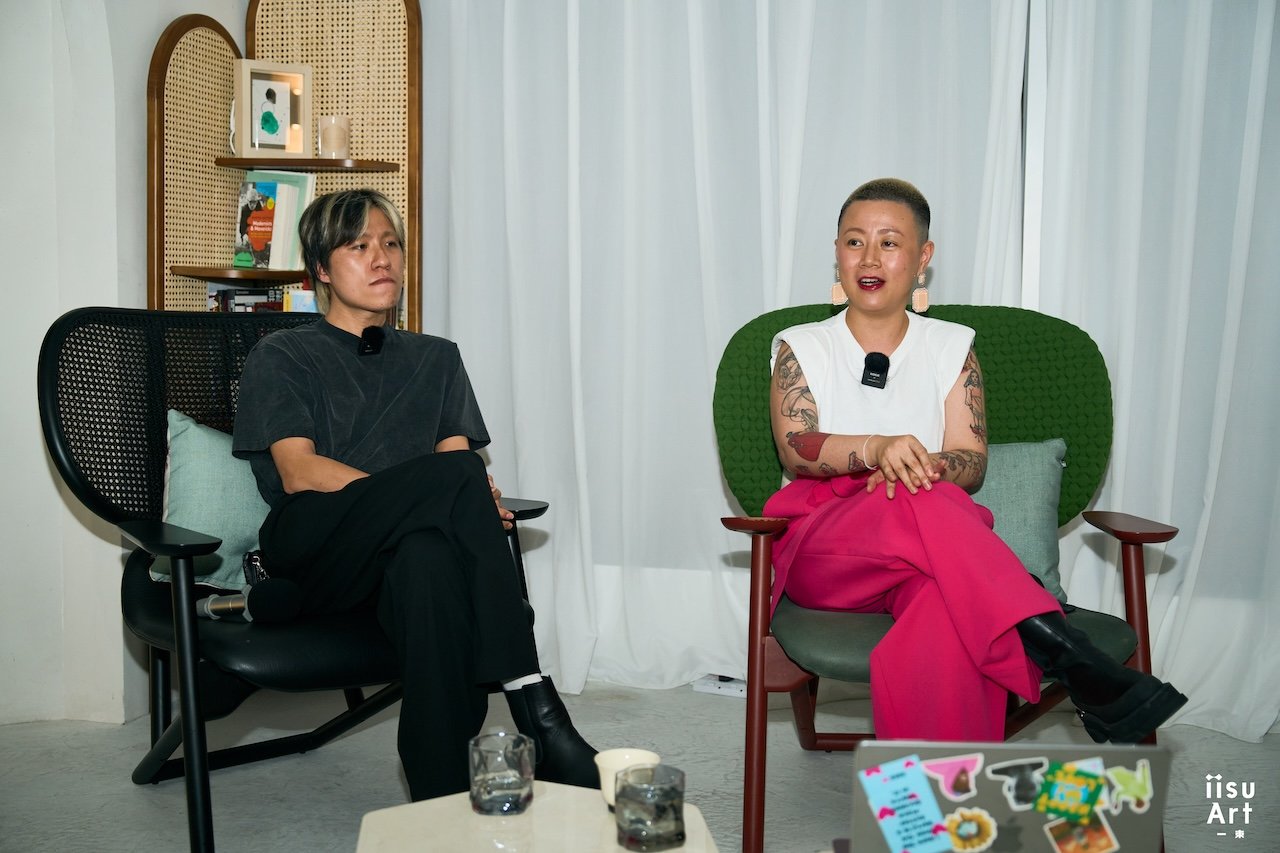The future of work: A New Space of Creative Work That Crosses Boundaries.
In the past, artistic expression was confined to designated categories. Music was composed for specific instruments, cooking was done with particular ingredients, paintings were created on canvas, and literature was written in specific genres. With the acceleration of new technical developments, globalisation and cross-cultural influences, the boundaries between these categories are becoming increasingly ambiguous. New forms of creative expression are emerging that defy traditional categorisation. This poses the question: What is the space for new creative work that crosses boundaries?
Director of Culture Joseph Chen of Eaton Hong Kong (left), artist Dr Sonia Wong (right), moderator by Oscar Venhuis
Together with interdisciplinary artist Dr Sonia Wong and director Joseph Chen of Eaton we sat down to explore this very question. Sonia’s most recent project, One Sheet of Warm Coexistence at iisuArt Gallery, investigated her fascination with embodied memories and creating meaning. Over the three days of her performance, Sonia introduced a white bed into a white-cube gallery, inviting friends, family, and complete strangers to share the bed with her.
Sonia stretches our mental limits of comfort by placing a very intimate performance into an entirely frosty white space. Joseph, on the other hand, confronts Eaton’s Hotel visitors with Sonia’s deeply personal encounters across Eaton’s communal workspace and corridors. Both have a different approach and yet Sonia and Joseph appear to move effortlessly between physical and psychological, private and public domains.
Today’s technology advancements are enabling interconnectivity between different worldviews and across geographical locations. As people from different cultures and backgrounds come into contact with one another, they bring their unique perspectives and experiences to the creative process. This can lead to new and ground-breaking forms of expression that challenge how we think about intent, how we create meaning, and subjects us of what life can be.
With most developments, this transformative shift is not without its challenges. Traditional museums, galleries, commercial and residential spaces struggle to work this new type of fluidity. Critics may also grapple to find the relevant language to describe it, as it may not fit exactly into conventional categories. Dr Caroline Ha Thuc investigates “why is it that contemporary art critics are predominantly writers?”
Even with these challenges, there is a growing appetite for experiences that cross boundaries and challenge traditional categorisations. Audiences are increasingly looking for experiences that are immersive, interactive, and unexpected. As a result, creators who are willing to push the boundaries and experiment with new forms of expression are finding a receptive audience.
While the physical, virtual, and psychological space for new creative work that crosses boundaries are expanding, it is important to remember that some boundaries are still firmly in place. In fact, the very idea of "crossing boundaries" has become so popular that it has become its own genre, complete with its own rules and limitations. So, if we really want to challenge the boundaries, we have to start by questioning the very idea of boundaries themselves because true creativity knows no limits, and oftentimes the most unconfined work is the creative space that defies categorisation altogether.
